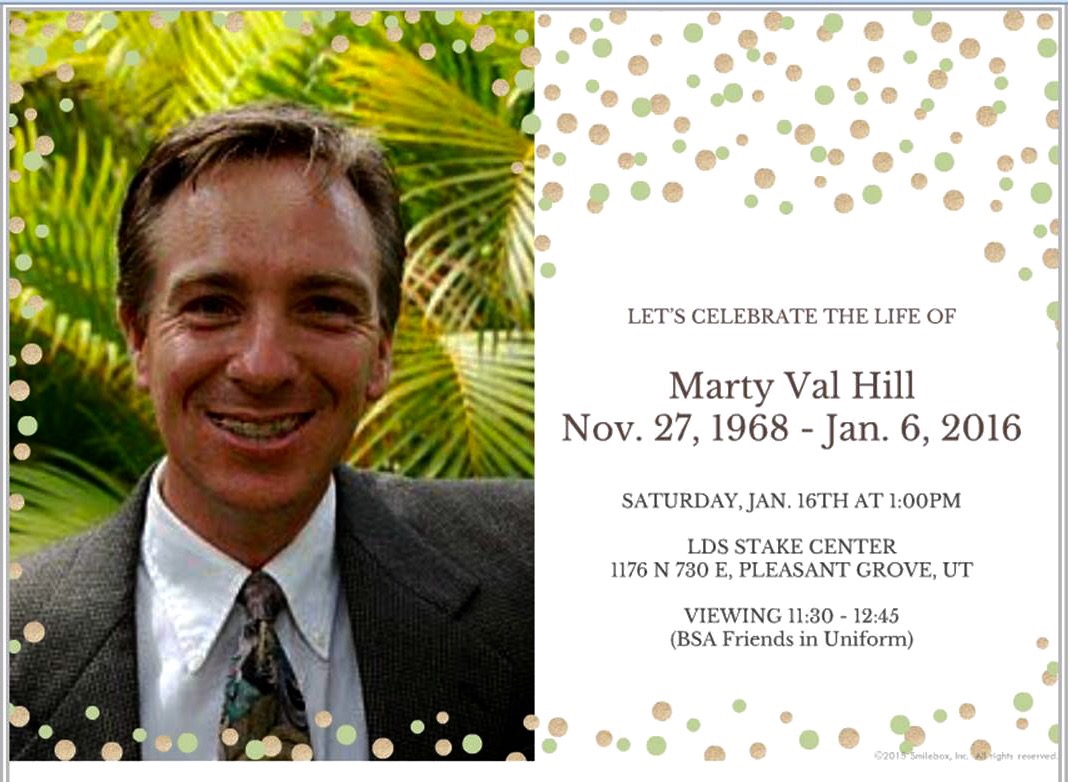That headline is not sarcastic. You should be happy you didn’t win. I know a couple of days ago I talked about how it’s a losing game. (Bill Gates And Mark Zuckerberg Will Give You The Powerball Lottery) But, we all want to believe that “it could happen to me.” So, you bought that ticket, or two, or $400 worth. And maybe you did win. . .a little. I have friends who won $4 or $20.
But, it’s the big prize we dream about. We imagine that we are one of those three people who are going to split the record $1.6B jackpot. And, of course, we understand the whole “taxes take 40% and the lump sum is smaller.” But, those three winners are going to clear about $140M after all is said and done.
Who wouldn’t want $140M?
If you are smart, you shouldn’t. Not like this. The lottery is an insidious institution. It’s a tax. But, it’s a tax that people willingly play. And it’s a tax on those least able to afford it. But, those poor people playing the lottery are the ones who could use it, right? Maybe you figure that you need money. I know there have been times when I went hungry so my kids could eat. My family with 12 kids was sleeping on the floor in my brother-in-law’s barn.
But, I didn’t need the lottery. I needed a job. I needed food. I needed a house to live in. And those things came from government, family and church help.
Now, I can hear you,
But, the lottery would supply all of that and more. And you would be able to help others. And you wouldn’t need to work again. . .ever.
Seventy percent of the lottery winners will lose it all within five years. It doesn’t matter if they win $500M or $1M, they will be broke in five years. Why do you think that is? I’m teaching 4 teenagers to drive this year. One just got his license. The other three are at various stages of proficiency. Imagine if I took my least skilled driver, handed him the keys to a 2016 Porche 911 Carrera and turned him loose on the streets? How long do you think he would last?
Handling money is a skill, like any other skill. And when you ask someone who isn’t trained to handle millions of dollars to suddenly manage huge wealth, it doesn’t end well. You see the same scenario play out in professional sports. While many players hire people to help them, others decide the money will never end and they end up broke.
Sports Illustrated did an article in 2009 that reported that 78% of NFL players are either bankrupt or commit suicide within two years of retirement and 60% of NBA players are bankrupt five years after leaving the league. Those numbers might be high, but even people who come into great wealth over a period of years like pro athletes still struggle to keep it together.
And I’ll leave you with the sobering tale of Jack Whittaker of West Virginia. Jack won $314.9M in 2002. You’d think he was set for life. But, the life he got was not the one he would have asked for. Jack was already a successful businessman when he won. His car was broken into multiple times and he lost hundreds of thousands. A plot was uncovered to drug and rob him at a club he attended. These things might be expected even if he hadn’t become an instant multi-millionaire. But, then his granddaughter’s boyfriend died of a drug overdose at Whittaker’s home. Then, his granddaughter died of an overdose. His daughter was found dead. He found himself sued by multiple people and businesses. Basically, his life went from a successful businessman with strong family connections to pretty messed up. “I wish I’d torn that ticket up,” he said.
So, you didn’t win the lotto. Count your blessing.
Rodney M Bliss is an author, columnist and IT Consultant. His blog updates every weekday at 7:00 AM Mountain Time. He lives in Pleasant Grove, UT with his lovely wife, thirteen children and grandchildren.
Follow him on
Twitter (@rodneymbliss)
Facebook (www.facebook.com/rbliss)
LinkedIn (www.LinkedIn.com/in/rbliss)
or email him at rbliss at msn dot com(c) 2016 Rodney M Bliss, all rights reserved
He died last week and he was my friend. He’d been sick for a long time, but kept living life to the fullest. The end came suddenly, shocking even those who knew he was sick. I saw him just a few weeks ago at a Star Wars premier party in Orem, UT. He died January 6th.
No, I’m not talking about David Bowie who tragically lost a battle with cancer recently.

I’m talking instead about a man you’ve most likely never heard of, but, one of the most amazing men I ever knew. His name was Marty Hill.
Like David Bowie, Marty has been sick for a very long time. He’s known he was dying for at least three years. We all know we are going to die. You, me our parents, our children. Death is the great equalizer. No one can escape him in the end. But, for most of us, we stumble through life in a state of blissful ignorance. We might be moments away from death due to an unexpected accident, or have decades left. The not knowing let’s us imagine that we will go on forever.
Would you want to know the day and hour of your death? It’s going to happen someday. Would it give you a sense of relief because the uncertainty was gone? Would it inspire to you use the time you have left wisely? Or would it frighten you into immobility; too scared to do anything?
Most of us don’t have to consider the greater implications. People like Bowie, and my friend Marty do. Marty didn’t know when he would die, not exactly. But, he knew death was stalking him like a middle linebacker who has correctly guessed which play the offense called, gliding across the middle, setting up to level the running back as soon as he cuts through the line.
Marty and I shared a love of scouting. Several years ago, he organized a monthly lunch in Salt Lake City for men who had earned the Eagle Scout badge. I know it sounds like a somewhat select group, but Marty brought us together to swap tales of campouts gone wrong and the wonderful challenges of molding boys into men through the scouting program.
I was out of work at the time and it seemed like a great networking opportunity. And it was a group of men I would have enjoyed hanging out with regardless. Marty didn’t dwell on his illness, but he didn’t shy away from talking about it either.
How are you doing, Marty?
I’m upright. Any day that you’re upright is a good day.
So. . .is there. . .you know. . .
No, there’s no change. The cancer is inoperable. It’s killing me. Slowly, fortunately, but there’s nothing anyone can do. The hardest part? Knowing I won’t get to see my kids grow up
We were about the same age, and our kids were young teenagers and pre-teens. I didn’t see how he could do it. How do you get up every morning knowing you are one day closer to dying? And yet, we all are in that state.The difference, of course, is that Marty knew within a couple of years when the end would come. Eventually, I was hired by a local company and I could no longer attend the monthly lunches. I lost track of Marty except for the occasional social media update.
Last month my friend Caleb put on a Star Wars viewing party. (Yes, I’ve Seen It. No, I’m Not Going To Spoil It.)
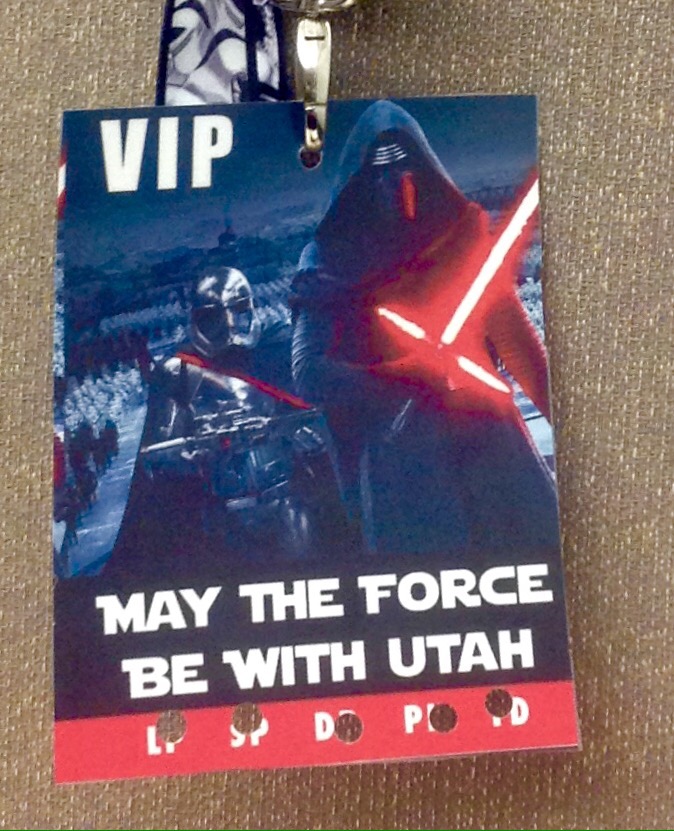
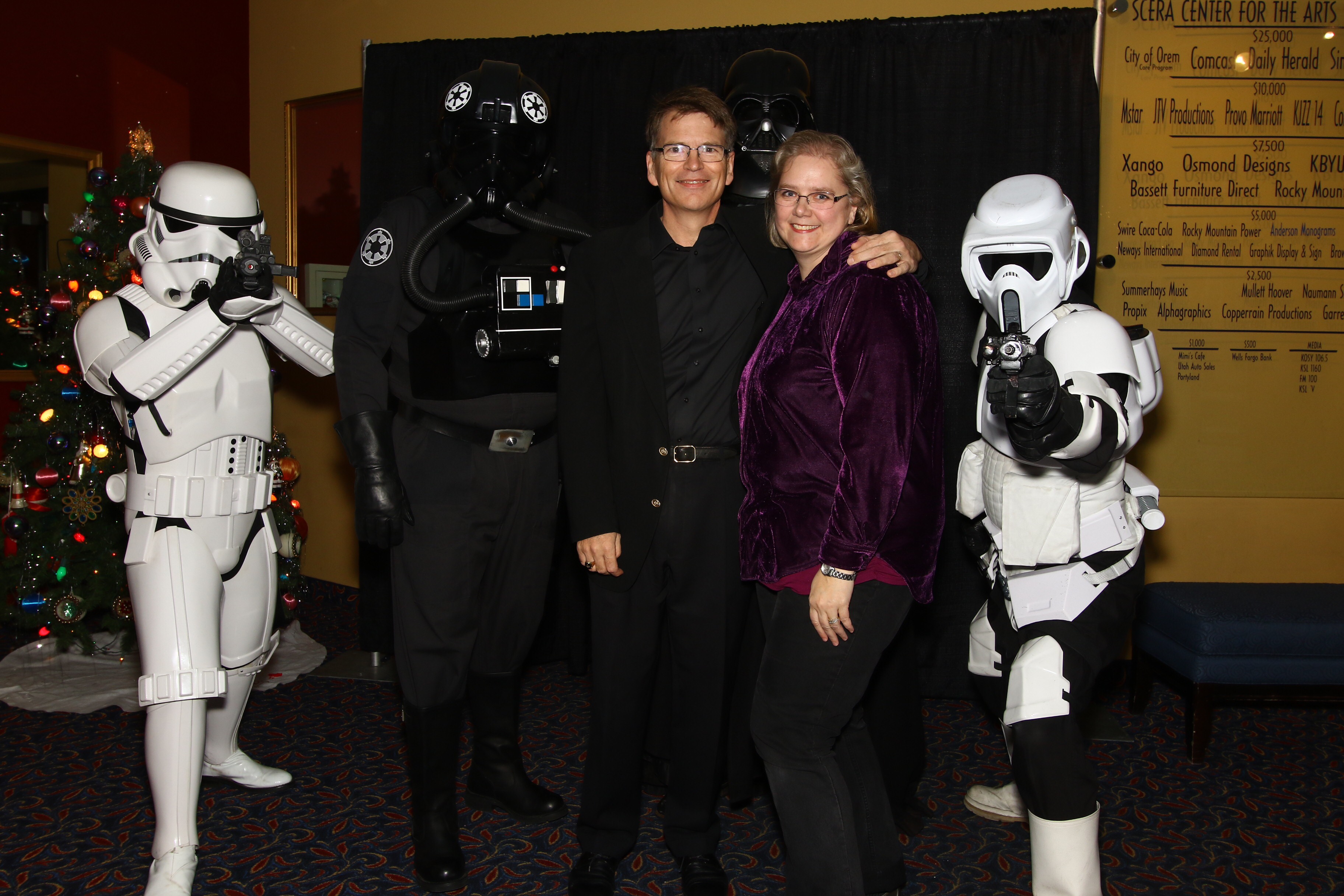 It was a surprise anniversary present for my lovely wife. As we mingled with the rest of the VIPs waiting for the time to go into the movie, I noticed an emaciated man moving slowly through the room where the food was served. He looked both like a stranger and familiar at the same time. I cautiously approached him.
It was a surprise anniversary present for my lovely wife. As we mingled with the rest of the VIPs waiting for the time to go into the movie, I noticed an emaciated man moving slowly through the room where the food was served. He looked both like a stranger and familiar at the same time. I cautiously approached him.
Marty?
Rodney, how are you doing? It’s great to see you.
You too. I wasn’t sure if it was you. . .
The conversation was as much about what wasn’t said as what was. I didn’t ask him how he was doing. We talked of safe topics, old friends, how we both ended up at Caleb’s party. As we parted I reminded him of the phrase, “Any day you’re upright is a good day.” He smiled without replying.
And last week, the end finally came. I honestly don’t know if his illness was painful. I assume it was, but he never spoke of it. He and Caleb and I used to live in the same neighborhood and all attend church together, although we’ve moved to other parts of our little city. I know that like me, he believes that we move on from this life to a better place.
I only hope that I can embrace life the way my friend did. He didn’t let the cancer keep him from engaging with friends. And even at the end when the cancer had robbed him of his strength and his body, he was still upright.
Any day you are upright is a good day.
Rodney M Bliss is an author, columnist and IT Consultant. His blog updates every weekday at 7:00 AM Mountain Time. He lives in Pleasant Grove, UT with his lovely wife, thirteen children and grandchildren.
Follow him on
Twitter (@rodneymbliss)
Facebook (www.facebook.com/rbliss)
LinkedIn (www.LinkedIn.com/in/rbliss)
or email him at rbliss at msn dot com(c) 2016 Rodney M Bliss, all rights reserved
$1,300,000,000
What would you do with it? What wouldn’t you do with it. Sure, the lump sum payout will only be $850,000,000 or so. Then, you are stuck with taxes of about 40%. So, you’re left with just slightly more than $500,000,000. Only a half billion dollars! And it could be yours! Sure the odds are pretty long, at 275,000,000 to 1. But, that’s not so much, is it? I mean, someone has to win it, right? Why not you?
How many people live in the United States? A generally accepted number is 330,000,000.
How far is it from Los Angeles to New York City? Most people say it’s about 3,000 miles.
How fast were you driving the last time you got stopped by the cops? Ten over? More?
Maybe you saw this notice about Mark Zuckerberg, the founder of Facebook giving away $45,000,000.
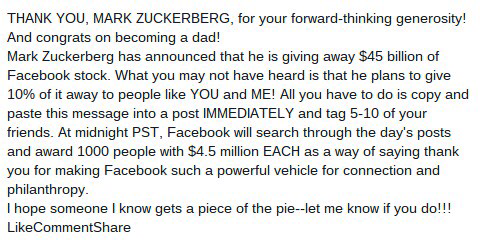
It’s similar to a meme that was popular a few years ago describing how Bill Gates would give you money for sharing a post.
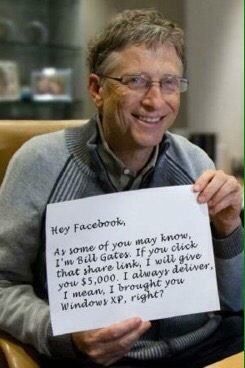
I don’t gamble, because I know a little about statistics. We’ve already established that someone will win the Powerball jackpot. Did you know that the odds of you winning the Powerball are exactly the same as the odds that Zuckerberg or Gates is going to cut you a check?
You probably don’t believe me. You’re right now explaining that 275 million to 1, while really terrible odds, is still better than zero, which is the chance that a billionaire is going to start writing checks to random Facebook people. But, in fact, you’ve already agreed that the two percentages are the same.
How many people in the United States? We said 330,000,000 right? Wrong. In 2014 the number was estimated to be 318.9M. Okay, I picked the 330M and it was off. I’ll even give you the 318.9M number. You are still wrong. Obviously we’ve had another year of growth and that number is rounded to the nearest hundred thousand. The true number, the exact number is much more precise. We round those big numbers because it makes it convenient to talk about. And 318,900,000 or even 330M is close enough. We have set the number of significant digits to 4 (3189.) We know the number is more, but we are pretty sure that we are correct to the nearest hundred thousand.
How far from LA to NYC? We said 3,000 miles. Actually, according to Google maps, it’s 2,790.7. That’s a pretty exact number right? Five significant digits. But, even if it’s right, we are rounding again to the nearest tenth of a mile. A tenth of a mile is about 527 feet. Almost two football fields long. Not too bad an estimate if you are driving, but quite a ways off if you were trying to hit something with a baseball. But, we agree that miles are generally an acceptable measurement. If I told you it’s 40 miles from my house to Salt Lake City, you’d probably accept the fact that it’s not exactly 40.
When the nice man in the uniform with the blue lights on his car pulled you over how fast were you going?
I clocked you going 49 in a 25.
(That really happened to me.)
But, were you going exactly 24 miles per hour over the speed limit? Of course not. Your car’s speedometer and the cop’s radar are not that precise. But, we agree that two significant digits is good enough.
How precise do you think you could get in a measurement before it becomes impractical to get any more precise? With temperature, we accept 3 significant digits. If 98.6 is good. 99.0 represents a slight fever. 95.0 degrees and you are becoming hypothermic. But, would you buy a thermometer that promised to show your temperature to the hundredth of a degree? 98.65 degrees? Or 95.06 degrees? Probably not.
How about a speedometer that showed you the hundredths of a MPH?
I stopped you for going 49.56 in a 25 mph zone!
What about a speedometer that measured the speed to twelve significant digits?
You were going 49.5600000036 in that 25.0000000000 zone!
The Powerball odds are 1 in 275,000,000. That means you have a 0.00000036% chance of winning. We’ve talked about significant digits and how we use them in our everyday lives. To two, three, four, five even at six significant digits, your odds of winning Powerball are zero. I would venture to say that there is probably nothing in your life, unless you work with really small numbers, that you measure to six significant digits. By the measurements that you and virtually everyone else uses, the odds of you winning the Powerball are zero. . .exactly the same odds as Gates or Zuckerberg sending you a check.
Good luck!
Rodney M Bliss is an author, columnist and IT Consultant. His blog updates every weekday at 7:00 AM Mountain Time. He lives in Pleasant Grove, UT with his lovely wife, thirteen children and grandchildren.
Follow him on
Twitter (@rodneymbliss)
Facebook (www.facebook.com/rbliss)
LinkedIn (www.LinkedIn.com/in/rbliss)
or email him at rbliss at msn dot com(c) 2015 Rodney M Bliss, all rights reserved
You know what you never see in a James Bond movie? You almost never see how he gets from England to Monaco. Or, watch him flying from New York to Dubai. And often he’s making last minute travel arrangements.
I spent last week in Richmond. My travel approval came through kind of last minute. With the holiday schedules and vacations, I was uncertain if I’d even get our corporate travel group to schedule it. Finally, on Monday, the 28th, I got my tickets for January 4th. Anyone who’s ever travelled knows what happens when you book your travel less than a week before you leave: they price of your ticket goes up and your end up with a middle seat.
If you fly from Salt Lake City to Richmond, VA you are mostly likely going to fly Delta, which of course, stands for “Dang, Everything Leaves Through Atlanta.” I ended up in a middle seat at the back of the plane for the 3.5 hour flight to Atlanta and a middle seat in the middle of the plane for my 90 minute connection to Richmond.

I’m not complaining. I’ve travelled enough to know that this is just the way it works. But, that got me thinking about James Bond. He does lots of travelling, of course. He typically is under cover and needs to keep a low profile. And he books his travel at the last minute. So, I’m convinced that he must spend a lot of time in the middle seat. It’s a wonder they don’t show more of that in the movies.
So, next time you are enjoying your window seat, and trying to steal more than your portion of the shared arm rest, maybe you should back off. The guy sitting in that middle seat just might have a license to kill you.
Rodney M Bliss is an author, columnist and IT Consultant. His blog updates every weekday at 7:00 AM Mountain Time. He lives in Pleasant Grove, UT with his lovely wife, thirteen children and grandchildren.
Follow him on
Twitter (@rodneymbliss)
Facebook (www.facebook.com/rbliss)
LinkedIn (www.LinkedIn.com/in/rbliss)
or email him at rbliss at msn dot com(c) 2015 Rodney M Bliss, all rights reserved
We started last January.
Kids, we had a thought. Instead of buying Christmas presents this year, we’ll make gifts.
How would that work?
We each draw two names and then you have the entire year to make a present for those people.
Of course, that’s not the way it worked out.
I’ve spent my career working for software companies. I’ve worked for large ones like WordPerfect and Microsoft. I’ve worked for small ones like Agile Studios and RESMARK.
I’ve worked on multiple software projects. The size of the project was not necessarily the same as the size of the company. At Agile Studios we often worked on projects that had budgets of a few thousand dollars and a schedule of a couple of months. But, we also worked on the software that we would spin off into RESMARK. It was a reservation system for the rafting industry. Our project had a two year schedule and a budget of about $1.5M.
At Microsoft I was part of the massive development team for Microsoft Vista. I also was the Program Manager responsible for a project that retrofitted our older disability awareness framework to the new tools framework. It involved a half dozen developers and took a few months.
Software costs money. That’s not news to anyone. But, part of the role of a project stakeholder is to determine if it would be cheaper to build a program internally, or buy an existing program. Ironically, building is often more expensive than buying. The RESMARK reservation system, for example, cost us about a million and a half dollars to build, but sold for $10,000. The advantage of course, is that when you build it, you get to put in what features you choose.
It’s not just software projects that need to make a build or buy decision. While I was the Executive Vice President of Agile Studios we had to decide how to handle our payroll and taxes. Our receptionist offered to help out.
You know, I could just do the taxes and the payroll along with my other stuff.
Do you have training in accounting?
Not really, but it’s pretty simple with TurboTax.
Did you know that if a company fails to withhold the proper amount of payroll taxes, that the company executives are personally liable for any discrepancies? If the court determines that fraud was involved, the principals can even go to jail. I wasn’t willing to trust my freedom to someone using Turbo Tax. We opted to “buy” payroll services from a firm specializing in taxes rather than “building” it ourselves.
Our Christmas build or buy decisions were similar. Our project schedule was eleven months. The budget was whatever scrap wood I had in my workshop plus a modest and the feature set was whatever my kids could think up that I could build in my garage workshop.



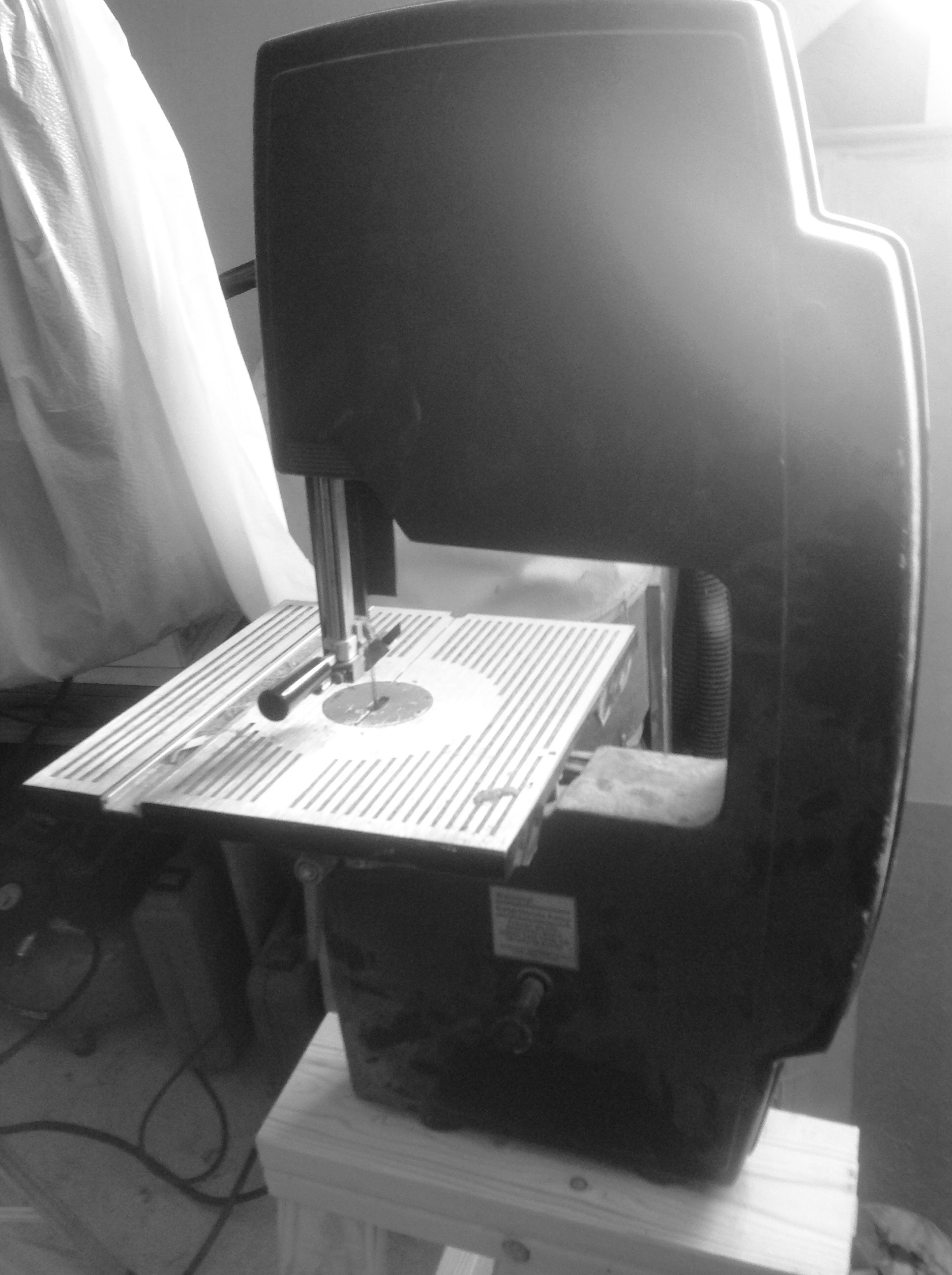
I created trunks for my two boys. The process took months. I build the basic boxes out of 2×2 boards, 3/4″ and 1/2″ plywood.

After building them, I sanded them then painted them and finally added all the hardware. I’m not sure what a wooden footlocker would cost, but the hardware alone was pretty pricey. Ultimately, I may have spent more building my present than it would have cost to buy them. However, I got to include exactly the features I wanted.

 It was fun to take time throughout the year and occasionally work on the trunk project. I kept reminding my kids that the calendar was slipping by.
It was fun to take time throughout the year and occasionally work on the trunk project. I kept reminding my kids that the calendar was slipping by.
I know, Dad. I’m fine.
Many of my kids were diligent about working on their gifts, but their were some that seemed to put it off indefinitely. It’s not like I was involved with every gift. Christmas morning we had our share of ceramic dolphins and other school projects. But, not everyone planned well. About two weeks before Christmas we had a family meeting.
Okay, we’ve got two weeks until Christmas. I’ve got time to help any of you with your gifts, but I don’t want anyone coming to me for the first time on Christmas Eve and saying, “I need help with my gift.”
Okay, Dad.
No problem, Dad.
We’ve got it covered, Dad.
Christmas Eve I was in my workshop with one of my kids who was there for the first time.
Dad, I need help with my gift.
The parallels to software projects made me laugh as I set up my shop tools. There’s an 80/20 principle in project work that say that 80% of the work gets done in the last twenty percent of the schedule. I’m not sure that Christmas Eve qualified as the last 20%, but it wasn’t the first time I’d spent the night prior to a project deadline frantically working to complete the last of the features.
Fortunately the projects all got completed on time. In fact, some of the last minute projects were the most popular. This Christmas, building was definitely the right decision.
Rodney M Bliss is an author, columnist and IT Consultant. His blog updates every weekday at 7:00 AM Mountain Time. He lives in Pleasant Grove, UT with his lovely wife, thirteen children and grandchildren.
Follow him on
Twitter (@rodneymbliss)
Facebook (www.facebook.com/rbliss)
LinkedIn (www.LinkedIn.com/in/rbliss)
or email him at rbliss at msn dot com(c) 2015 Rodney M Bliss, all rights reserved
He was the greatest of his generation. He was one of the 50 best of all time. He was the best ever at his position. And when it was time to vote for him to enter the Hall of Fame the question was not a question of if he would be elected, but what percentage of people would vote for him.
In my job, perfection is 99.95%. I’m responsible for the availability of our systems. Anything above 99.95% availability and we have no penalty. Less than that and we have to pay. I spend much of my day figuring out how to keep our computers running. As long as my percentage stays above 99.95%, it doesn’t matter if I have a 5 min outage or a 15 minute outage. Green is green.
When I was working at Microsoft, support engineers had to take Microsoft certification tests. We already knew the matieral, but to “eat our own dog food” we decided we wanted to pass the exams that our end users would pass. If you passed the test with the exact score needed to pass, it was considered a perfect score. If a certification exam needed a 749 out of 900 to pass and you scored a 749, you didn’t study too much or too little. You studied the perfect amount. Thus, you got a perfect score. So, 749 was perfect.
George Washington is the only US President who ever received a unanimous electoral vote for president. He really did get 100%. Next closest was James Monroe who received 231 out of 235 for 99.57%. The two modern presidents with the highest percentages were Franklin Roosevelt in 1936 with 98.49% and Ronald Reagan with 97.58%. And yet, even Washington, who was elected unanimously not once, but twice, didn’t receive all the electoral votes. In that first election, John Adams received 34 electoral votes. The system was different back then. Electors voted for two candidates. The one who got the most votes was president the one who got the second most was Vice President. So, even when a vote was “unanimous” it might still not be total.
Yesterday was an important day for baseball and a really important day for Seattle Mariners fans. There are 310 people who’ve been elected to the Baseball Hall of Fame. Of those, 215 are former Major League players. Not a single one of those men were Seattle Mariners players. Sure, some played for the Mariners. For example, last year Randy Johnson who pitched for many years in Seattle, was elected. But, he went into the Hall wearing an Arizon Diamondback’s cap. I can’t complain. After leaving the Mariners, Johnson won two World Series Championship, won a Cy Young, and pitched a perfect game.
But, there is no player in Cooperstown that is wearing a Mariners cap in his bronze plaque. The closest they came was when Dave Niehaus, the radio voice of the Mariners was inducted in 2008. That changed yesterday. Well, it hasn’t changed yet, it will change in July when Ken Griffey Jr, long time Mariner’s center fielder takes his place in baseball’s Shrine of Heroes.
The question wasn’t whether Griffey would be elected. It wasn’t even a question of whether he would be elected on the first ballot. The real question was whether Grifey would be elected unanimously to the Baseball Hall of Fame. It’s never happened. Not Ty Cobb, not Cy Young, not even the great Babe Ruth was elected with 100% of the vote. Think about that. Someone filled out a Hall of Fame ballot and decided that Ruth might not be the type of player who belonged in the Hall.
There are 440 people who vote for Hall of Fame inductees. Of those, 437 checked the box next to Ken Griffey Jr’s name. Three people left him off their list. As a self professed baseball geek it’s inconceivable that anyone wouldn’t include Griffey on their ballot.
But, he did make history. He’s the first person to be chosen at the #1 pick in the draft at the beginning of his career and then elected to the Hall of fame at the end. His 99.3% first ballot percentage was the highest in history. Were there people who could have voted for Griffey that didn’t? Sure. But, as a long suffering Mariners fan, who’s seen the team achieve great success but alway fall short of the ultimate prize of a World Series or a player’s induction into the Hall of Fame, I could finally smile at the thought that the long drought was over. And that was perfect.
Rodney M Bliss is an author, columnist and IT Consultant. His blog updates every weekday at 7:00 AM Mountain Time. He lives in Pleasant Grove, UT with his lovely wife, thirteen children and grandchildren.
Follow him on
Twitter (@rodneymbliss)
Facebook (www.facebook.com/rbliss)
LinkedIn (www.LinkedIn.com/in/rbliss)
or email him at rbliss at msn dot com(c) 2015 Rodney M Bliss, all rights reserved
Maybe I’m a grinch. My dad hated holidays. It was a struggle for him to be around the family during the hustle and bustle of Christmas. I sometimes wonder if I’m destined to become him. I may have gotten started on that last week at Christmas. Utah has been suffering through a multi-year drought. As a desert state, we love water, rain and snow. We talk about it. We obsess over it. We pray for it. And on Christmas Eve our prayers were answered.
A lot.
We woke up Christmas morning to eighteen inches of the best snow on earth. Unfortunately it was all piled on my driveway, and steps, and sidewalks, and pushed into piles on the streets because there was no place else for the snow plowsto pile it. And that was a problem.
Boys! Boys, wake up.
Dad, you said we could open our stockings at 7:30. It’s not even 7:00 yet.
Yeah, well you can open your stockings after your shovel the driveway. You’re sister needs somewhere to park.
And so, Christmas morning, before the sun lightened the snow clouds over the Wasatch Mountains, I was out with my sons, and one of my daughters moving mountains of snow.

Our house sits at the intersection of three streets. I have a street to the north, one to the west and another to the south. That’s a lot of sidewalks. There are sixteen steps leading up to my front door. That’s a lot of stairs to clear. Shoveling my driveway is actually the quickest task of the three.

My kids are used to the routine. They don’t even complain much any more. They know the sooner the walks, stairs and driveway gets shoveled, the sooner they can get on with the rest of their plans. In fact, they really hope that I don’t decide they need to help shovel some neighbor’s driveway. Eighteen inches? On Christmas morning? No, I’m not that big of a grinch.
The snow was powdery and while there was a lot of it, they quickly had our steps, sidewalk and driveway clear of the worst of it.

As the kids stacked their shovels and headed in to see what goodies Santa’s helpers had left in their Christmas stockings, I looked up the street. An older couple live at the end of our cul-de-sac. He’s in his eighties. And a few years ago he slipped and fell while shoveling his driveway. Throwing my shovel over my shoulder I carefully made my way up the hill.
I met my neighbor’s son and son in law who were busy clearing his driveway. The street was crowded with parked cars and the snowplows had done little more than plow a path down the center of the street. I helped my neighbor’s family clear a path to the street. We shoveled the sloped driveway starting at the top because we ended up sliding down to the street as we went.
As we were finishing the driveway, several middle aged men came streaming out of the house next door. They had more men than shovels.
I live just down the block and can grab a couple of extra.
Sure. Thanks for the help.
As we started moving the mountains of snow to clear a path to the street each of my fellow human snowplows introduced themselves and explained their relationship to my neighbor.
Where y’all from?
Illinois.
Orem.
St George.
Really? Not much snow there?
No. In fact this is the first time I’ve ever shoveled snow.
As we finished clearing a path, we noticed another neighbor down past my house was now out clearing his driveway. Like a parka clad street sweeper gang, we wandered from house to house. Strangers became friends. Neighbor’s ventured out to share a task we all faced. The sun was well up now, but hidden behind a think layer of clouds that were threatening to drop more snow on our freshly cleared driveways.
Finally, we each headed back toward our own homes and waiting Christmas presents and family gatherings. The temperature hovered in the 20s. Not bad when we were moving, but I could feel the cold on my face and seeping through the soles of my feet. I bid goodbye to my new friends.
The snow finally started to fall gently, as it would all week. I laughed as I thought of all the people dreaming of a white Christmas; not just in California and Florida, but New York, Chicago and Milwaukee. Temperatures in the mid-west and east coast was in the 60s and 70s.
I smiled again at the idea of the Grinch. The Grinch that stole Christmas.
Rodney M Bliss is an author, columnist and IT Consultant. His blog updates every weekday at 7:00 AM Mountain Time. He lives in Pleasant Grove, UT with his lovely wife, thirteen children and grandchildren.
Follow him on
Twitter (@rodneymbliss)
Facebook (www.facebook.com/rbliss)
LinkedIn (www.LinkedIn.com/in/rbliss)
or email him at rbliss at msn dot com(c) 2015 Rodney M Bliss, all rights reserved
My lovely wife picked it up at a discount store for $20.
I figured even if we didn’t give it as a gift, we could use it to store throw pillows and blankets.
The trunk was about 5 feet long, two feet wide and 3 feet high. It was made entirely of plywood. And not expensive high grade plywood. The reason it’s called plywood, is that it’s made of layers, or “plys.” The more plys the more wood, the less warping and the more expensive. High grade plywood has 7 plys. Typically the outer layer of plywood is the nice looking version. It can be maple, or oak.

Our new project had five plys and the outer layer was pine. The lid was broken off. Plywood is reasonably strong if you screw into the face of it, but if you screw into the edge, your screw is simply churning in between the layers. That’s how the lid had been attached. The long ago carpenter had used typical wing style hinges, like you might find on a door, only smaller. When I saw that they were attached with flat head screws I just rolled my eyes. No one uses flat head screws anymore.

Plywood is rated by the number of layers, or plys of wood. This wood is 5-ply.
Was it really worth it? A plywood box held together with wood screws. Why even bother? Still, with my superior materials and tools, maybe I could make the trunk serviceable. Little did I know how wrong I was.
It’s easy to look at what came before and laugh at how simple things were, how backward and how much better we are today. And yet, we don’t often think about how technically brilliant early pioneers were.
When I started working in computers in 1988, my first computer was an 8088 with 640KB of memory. Today’s computers are thousands of times faster with millions of times more memory. For example, when you take a picture with a 2.4 megapixel camera, the picture will take up four times more memory than I had in my entire first computer, and that’s on a cellphone.
So, we have much better computers, do we have better computer programmers? The challenge when writing programs 30 years ago was that you had to make every byte count. You had to think first about space and second about speed. It’s sometimes hard to remember the constraints that early programmers and users had to work under.
I remember the first time I tried to download a picture off the internet. It came down in 5 or 6 files, and each took several minutes. You had to be very selective about what you chose to transmit over those old 2400 baud modems. That would be the equivalent of a 0.0024 MB speed compared to today’s high speed . So, how did the computer programmers and system engineers evey manage to build systems? Are their systems the equivalent of a Model A automobile or the Kitty Hawk which flew less than 75 feet on it’s first flight?
Not necessarily. TCP/IP, for example, is ancient in computer time. It was first introduced in 1982, more than 30 years ago. We still use it. Also in 1982, SMTP was developed. It stands for Simple Mail Transfer Protocol. You may not be familiar with the acronym, but every time you send an email, you are using it. The protocol has been modified many times, of course, but it’s still sending email all around the world. The JPEG format, that many web sites use was developed in 1990.
My point is that we are still today using many of the protocols that were developed decades ago. I work with brilliant programmers, but I don’t know that the programs they are writing today will still be in use 30 years from now. Those pioneers were really, really good. We sometimes forget that.
My plywood box has some pretty serious water damage on the bottom. I stripped of the bottom pieces of playwood and replaced it with hardwood. The plywood pieces I was replacing literally came apart in my hands. Instead of wooden plugs hiding flathead screws, I used a high grade wood glue and a pneumatic nail gun.

This round light colored spots are wooden pegs that are hiding the screws holding the box together.
But as I worked, I noticed something. While the materials might have been simple plywood, the craftsmanship was better than I was expecting. In fact, it was much better. As I started refurbishing this old trunk, I started thinking about that long ago carpenter. He no doubt used hand tools. I was using cordless drills, and power tools. He was using 5 ply, plywood. I had beautiful oak hardwood.
And yet, I realized that with all my advantages, I wasn’t half the carpenter he was. I quickly came to appreciate the care and skill he had used to not just build a box, but craft a piece of furniture. Do I make things that some future carpenter or IT person will appreciate as a work of superior craftsmanship? I don’t know. I do know that I started putting more thought into the repair project I was doing.

I replaced the original hinges with a 5 foot long piano hinge. All pictures are of the completed restored box.
Rodney M Bliss is an author, columnist and IT Consultant. His blog updates every weekday at 7:00 AM Mountain Time. He lives in Pleasant Grove, UT with his lovely wife, thirteen children and grandchildren.
Follow him on
Twitter (@rodneymbliss)
Facebook (www.facebook.com/rbliss)
LinkedIn (www.LinkedIn.com/in/rbliss)
or email him at rbliss at msn dot com(c) 2015 Rodney M Bliss, all rights reserved
I had a dilemma. How do you wrap a four cubic foot footlocker? I could simply throw a blanket over it and call it good, but where’s the suspense in that? Christmas was coming and I was giving my son, actually two of my sons, footlockers. The footlockers measured 30″ long by 12″ high by 18″ wide. My boys had already seen the footlockers in the garage. But, they didn’t know if they were for them, or one of their brothers or sisters.

The question really is how do you disguise something in plain sight?
A couple years ago the president of an identity protection firm was so confident in his company’s product, that he broadcast his real Social Security number. He put it in commercials. He put it on billboards. He was very upfront about it.
You know what happened, right? Yes, hackers figured out how to steal his identity. He no longer shares his SSN. In fact, the story was that he needed to request a new SSN. He attempted to hide in plain sight. It didn’t work.
Up until two years ago, I didn’t include a password on my wifi connection. I hid the SSID, or the name, but I didn’t otherwise protect it. I worked with a group of really smart engineers at the time.
Do you realize how simple it would be to find your SSID, Rodney?
Actually, I did. Hiding your SSID is not really security. At best it would be described as “security through obscurity.” To find the SSID, all you have to do is be near the router with a laptop, or a device that can “sniff” the packets going through the air. When my laptop, or some other device connects to my wifi router, it broadcasts the name. Essentially, my laptop yells
HEY! IS ANY DEVICE WITHIN THE SOUND OF MY VOICE NAMED RODNEYWIFI?
Of course, my wifi router, which is constantly listening pipes up and says,
Yeah, that’s me. I’m RODNEYWIFI.
At that point the hacker knows my SSID. And worse, if they watch for just a few more packets, they will see the following exchange.
Say, RODNEYWIFI, do you have any sort of protection?
Nope. Not a thing.
At that point the hacker owns my connections. So, why would I do something so insecure? Because I wasn’t protecting myself from my engineers. I wasn’t even really trying to protect against a hacker. I was protecting myself from the neighborhood kid next door. And he wasn’t going to hack my wifi. In other words, I was hiding in plain sight.
Today, I’m a little more cautious. Not because the neighborhood kid got smarter. He left home and moved to Idaho. But now I have a house full of teenagers, and I want to keep a least a moderate amount of control over how they use the Internet. I still don’t broadcast my wifi name. And there are still people who could come along and “sniff” my wifi signal. Now what they’d hear would look like this.
HEY! IS ANY DEVICE WITHIN THE SOUND OF MY VOICE NAMED RODNEYSBETTERWIFI?
Yeah, that’s me. I’m RODNEYSBETTERWIFI.
Say, RODNEYSBETTERWIFI, do you have any sort of protection?
Sure do.
Actually, that last bit’s not quite right. As you know, when you setup a wifi connection on your laptop, you have to already know the type of security and the password. So, the conversation would be more like
Say, RODNEYSBETTERWIFI, I have a secret.
Yeah, me too.
[STATIC]
How do you hide something in plain sight? For Christmas, I decided not to try to wrap or hide my boys’ presents. But, I still wanted to surprise my sons. I created miniatures of each box. The painting was exactly the same, even down to the color of the star on the front; gold on one, silver on the other. then, I wrapped the models.

And the actual footlockers? I hid them right out in plain sight.
Rodney M Bliss is an author, columnist and IT Consultant. His blog updates every weekday at 7:00 AM Mountain Time. He lives in Pleasant Grove, UT with his lovely wife, thirteen children and grandchildren.
Follow him on
Twitter (@rodneymbliss)
Facebook (www.facebook.com/rbliss)
LinkedIn (www.LinkedIn.com/in/rbliss)
or email him at rbliss at msn dot com(c) 2015 Rodney M Bliss, all rights reserved
What’d you wish when you threw that rock?
Oh, no.
Come on, tell me.
If I told you, it might not come true.
Like many families, we have holiday traditions at my house.
- We setup Christmas decorations the day after Thanksgiving.
- We team with my neighbor to set our outdoor lights to music.
- The kids enact the Naitivity play on Christmas Eve as I read it out of a 130 year old Bible
-
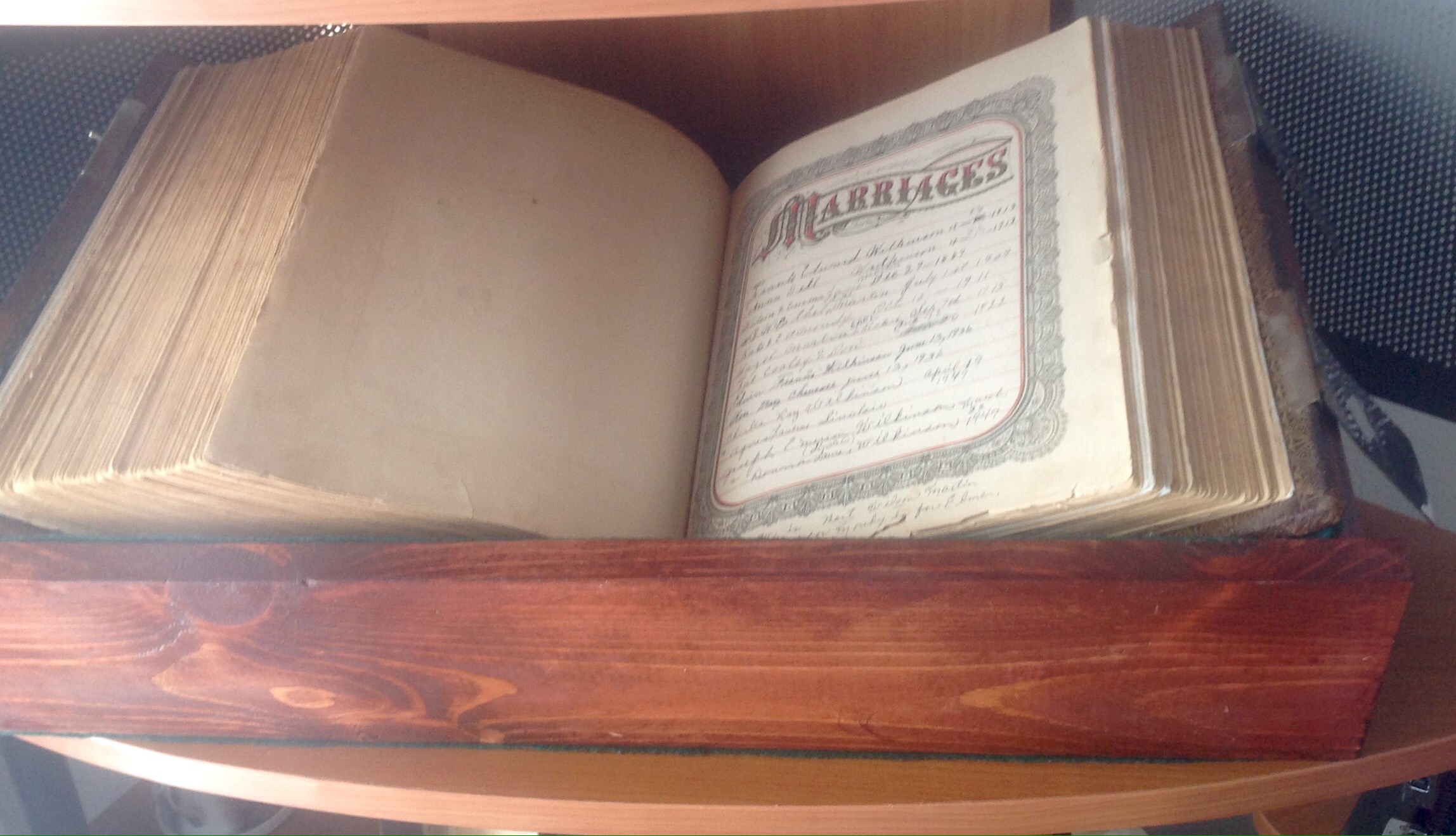
- We open presents one person at a time
- The day after Christmas we eat pie for breakfast
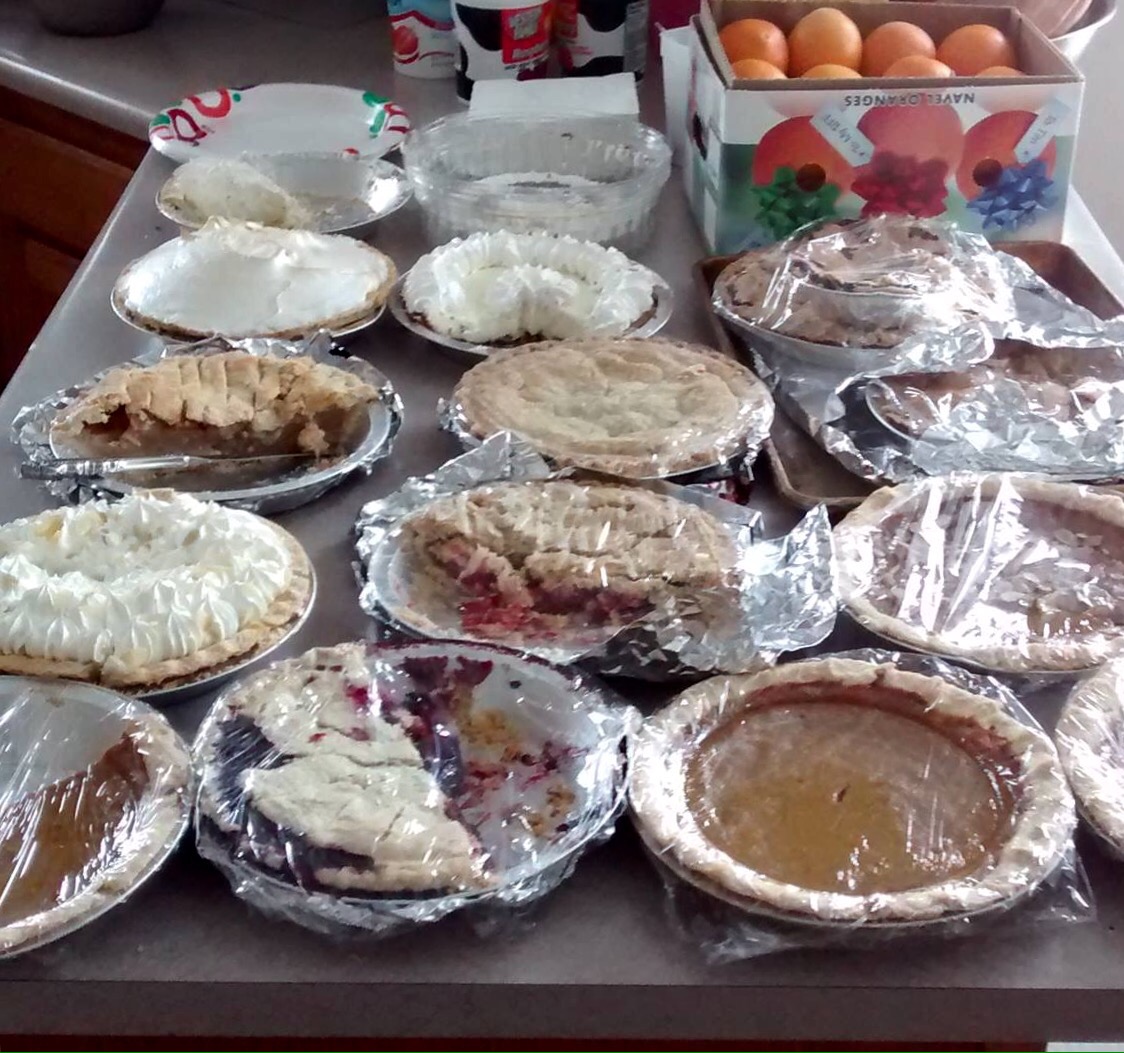
The quote at the beginning of this post is from “It’s a Wonderful Life.” As we watched the movie this year, I was struck by the difference between the main character, George Bailey and his wife, Mary. As young people, they both break a window in an old house and make a wish. Mary refuses to share hers at the time. Not so George.
What did you wish, George?
Well, not just one wish. A whole hatful. Mary, I know what I’m gonna do tomorrow and the next day and the next year and the year after that. I’m shaking the dust of this crummy little town off my feet and I’m gonna see the world; Italy, Greece, the Parthenon, the Colesseum. Then, I’m coming back here and go to college an see what they know. And then I’m going to build things. I’m gonna build air fields. I’m gonna build skyscrapers a hundred stories high. I’m gonna build bridges a mile long.
The tragedy of the film is that George never accomplishes any of his wishes. He never even leaves the “crummy little town” of Bedford Falls. On the other hand, later in the film, as the newly married couple end up spending their wedding night in the same drafty old house house they’d thrown rocks at, we hear Mary say,
Remember the night we broke the windows in this old house? This is what I wished for.
I wonder how many of us make resolutions like George vs Mary? I know I’ve been guilty of creating long lists of things in multiple categories. Big dreams, grand dreams. Dreams that would literally transform my life. Occasionally they’ve come true. Often they don’t. Sometimes, reality interposes itself and I realize my stated dream was at odds with my actual dreams. Everything has a cost. Even if the cost is simply our time, or our attention, everything we do in life coast us something. I’ve discovered at times that when it came time to pay the cost for a dream, I didn’t want to sacrifice more important things.
To give your simple example, I’ve loved motorcycles since I was a kid. As an adult, I owned two motorcycles before I ever owned a car. Someday I want to own a Harley Davidson. I don’t even much care which one. I love the sound. I love the history. I love the idea. And yet, I don’t own a Harley. In fact, I don’t own any motorcycles. While I love to ride, motorcycles are more dangerous than cars. I made the decision when my wife first announced she was pregnant, that motorcycles were something that had to wait. I’ll buy one again someday. But, not while I have children who depend on me. I’m not willing to pay the price right now.
Unlike George, Mary had a very simple wish. She wanted to get married, have babies and raise them in Bedford Falls. It’s not just the different nature of her dreams, that struck me. I think Frank Capra, the director was intentionally showing us that there are not “small” dreams vs “big” dreams.What I noticed this year in watching the film was that Mary doesn’t talk about her dreams. She simply goes about making them happen. Sure, she says, “If I tell you it might not come true.” But, really, she’s showing us the difference between those who talk about their dreams and those who simply get busy making them happen.
A friend of mine posted his New Year’s resolution.
Gonna be realistic with my annual optimism: In 2016 I resolve to fail a lot, and then keep going anyway because that’s how success works.
I had goals last year for this blog. Many of them succeeded beyond my wildest dreams. Others are going to require more work. But as I look at the coming year, I’m going to try to take a lesson from a 70 year old film. I’m mostly going to make the goals and then get busy making them happen. Hopefully I’ll remember to stop along the way this year as I accomplish them and say,
This is what I wished for.
May all of you have a prosperous and happy 2016. Thanks for sharing 2015 with me and I’ll try to keep it entertaining.
Rodney M Bliss is an author, columnist and IT Consultant. His blog updates every weekday at 7:00 AM Mountain Time. He lives in Pleasant Grove, UT with his lovely wife, thirteen children and grandchildren.
Follow him on
Twitter (@rodneymbliss)
Facebook (www.facebook.com/rbliss)
LinkedIn (www.LinkedIn.com/in/rbliss)
or email him at rbliss at msn dot com(c) 2015 Rodney M Bliss, all rights reserved

